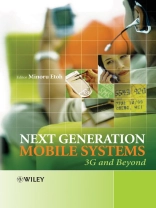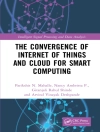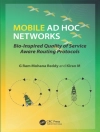What will the future of wireless communications look like?
What drives mobile communications systems beyond 3G?
In Next Generation Mobile Systems the authors answer
these questions and others surrounding the new technologies.
The book examines the current research issues driving the wireless
world and provides an inclusive overview of how established
technologies will evolve to suit next generation mobile
systems. While the term ‘4G’ already dominates
research in industry and academia, there are still numerous hurdles
to take before this ambitious concept can become reality. Acclaimed
researchers from NTT-Do Co Mo take up the debate of what type of
mobile communications will emerge in the post-3G era.
Next Generation Mobile Systems:
* Covers the evolution of IP-based systems and IP mobility.
* Gives a detailed overview of radio-access technologies and
wireless LANs.
* Explains APIs for mobile systems and IP mobility.
* Addresses middleware and applications, including terminal
platform technologies, multimedia, and wireless web services.
* Discusses security in future mobile networks, including
sections on Cryptographic Algorithms and Protocols for XG,
Authentication, Authorization, and Accounting, and Security Policy
Enforcement for Downloaded Code.
This valuable resource will provide communications engineers,
telecommunications managers and researchers in industry and
academia with a sound understanding of the future direction of
mobile technology.
Inhoudsopgave
Foreword.
Preface.
Acknowledgments.
List of Contributors.
I: A Vision for the Next Generation.
1. Evolution of Mobile Networks and Services.
1.1 The Evolution of Mobile Networks.
1.2 Trends in Mobile Services.
1.3 Why Next-generation (XG)Mobile Systems?
1.4 Next-generation Imperatives.
2. The All-IP Next-generation Network Architecture.
2.1 Introduction.
2.2 3G Architectures.
2.3 Approach to a Next-generation Architecture.
2.4 Conclusions.
II: Overview of Mobile Network Technologies.
3. Radio Access Technologies in Cellular Networks.
3.1 Introduction.
3.2 Background of Radio Access Technologies.
3.3 Radio Access Technologies in Wideband CDMA.
3.4 High-speed Transmission Technologies in HSDPA.
3.5 Radio Access Technologies for Next-generation Systems.
3.6 Broadband Radio Access Schemes for XG Systems.
3.7 Conclusions.
4. Wireless LAN Evolution 93
4.1 Introduction.
4.2 Basic Technologies in IEEE 802.11 WLAN.
4.3 Evolution of WLAN.
4.4 Mobility Support.
4.5 Quality of Service.
4.6 Security.
5. IP Mobility.
5.1 Introduction.
5.2 The Internet Architecture.
5.3 Network Layer Mobility in the Internet.
5.4 Achieving Seamless Mobility.
5.5 Summary.
6. APIs and Application Platforms for Next-generation Mobile Networks.
6.1 Introduction.
6.2 Background.
6.3 Standard Telecommunications APIs.
6.4 Advanced API Efforts.
6.5 Our Approach.
6.6 Discussion and Conclusions.
III: Middleware and Applications.
7. Terminal Software Platform Technologies.
7.1 Introduction.
7.2 Existing Terminal Software Platforms.
7.3 Runtime Environments.
7.4 Terminal Software Platform Security: Trusted Computing Group.
7.5 Terminal Software Platform Management: Over the Air Provisioning.
7.6 Research Directions.
7.7 Conclusions.
8. Multimedia Coding Technologies and Applications.
8.1 Introduction.
8.2 Speech and Audio Coding Technologies.
8.3 Video Coding Technologies.
8.4 Mobile Multimedia Applications.
9. Wireless Web Services.
9.1 Introduction.
9.2 Web Services Architecture.
9.3 Web Service Technologies for Small Wireless Devices.
9.4 Web Services and the Open Mobile Alliance.
9.5 Conclusion.
IV: Security.
10. Cryptographic Algorithms and Protocols for XG.
10.1 Introduction.
10.2 Secret-key Cryptography.
10.3 Public-key Cryptography.
10.4 Public-key Infrastructure.
10.5 Proving that a Cryptosystem is Secure.
10.6 Advanced Functionalities and Future Directions.
10.7 Conclusion.
11. Authentication, Authorization, and Accounting.
11.1 Evolution of AAA.
11.2 Common AAA Framework.
11.3 Technologies.
11.4 Emerging Research.
12. Security Policy Enforcement for Downloaded Code.
12.1 Introduction.
12.2 Standard Dynamic Monitors: Java 2.
12.3 Selective Dynamic Monitors.
12.4 Static Security Managers.
12.5 Conclusion.
Bibliography.
Index.
Over de auteur
Dr. Minoru Etoh is President & CEO of Do Co Mo Communication Laboratories USA, Inc as well as a Visiting Professor of Nara Institute of Science and Technology. His research interests include multimedia signal processing, media delivery over mobile networks and he contributes to ITU-T , 3GPP and W3C standardization activities.












